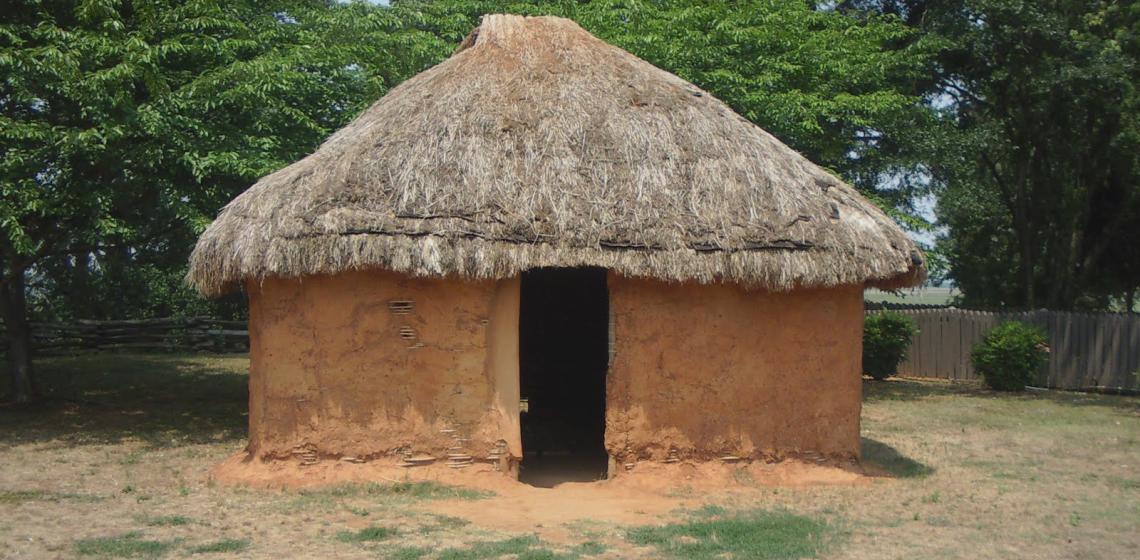
The re-construction of the home you see in the photo was the typical dwelling within the village (called a wattle & daub hut) of the native towns-person/family. It was believed to have a wood or rock frame then covered in packed red clay. These homes would have sat crowded on the perimeter of the courtyard/plaza which was below the mounds.
Home to several thousand Native Americans from 1000 A.D. to 1550 A.D., this 54-acre site protects six earthen mounds, a plaza, village site, borrow pits and defensive ditch. Etowah Mounds is the most intact Mississippian Culture site in the Southeast. Artifacts in the museum show how natives of this political and religious center decorated themselves with shell beads, paint, complicated hairdos, feathers and copper ear ornaments. Hand-carved stone effigies weighing 125 pounds still bear some original pigments. Objects made of wood, seashells and stone are also displayed.
Visitors can follow a nature trail along the Etowah River where they can view a v-shaped fish trap used for catching fish. The trail also highlights how early civilizations used native trees for food and medicine.
While only nine percent of this site has been excavated, examination at Mound C and surrounding artefacts revealed much about the people who lived here. They were a society rich in ritual. Towering over the community, the 63-foot earthen knoll was likely used as a platform for the home of the priest-chief. In another mound, nobility were buried in elaborate costumes accompanied by items they would need in their after-lives.
Etowah is a Muskogee word derived from italwa meaning "town". The federally recognized Muscogee (Creek) Nation and Poarch Band of Creek Indians consider Etalwa to be their most important ancestral town. From 1000–1550 CE, Etowah was occupied by a series of cycling chiefdoms over the course of five and a half centuries.
